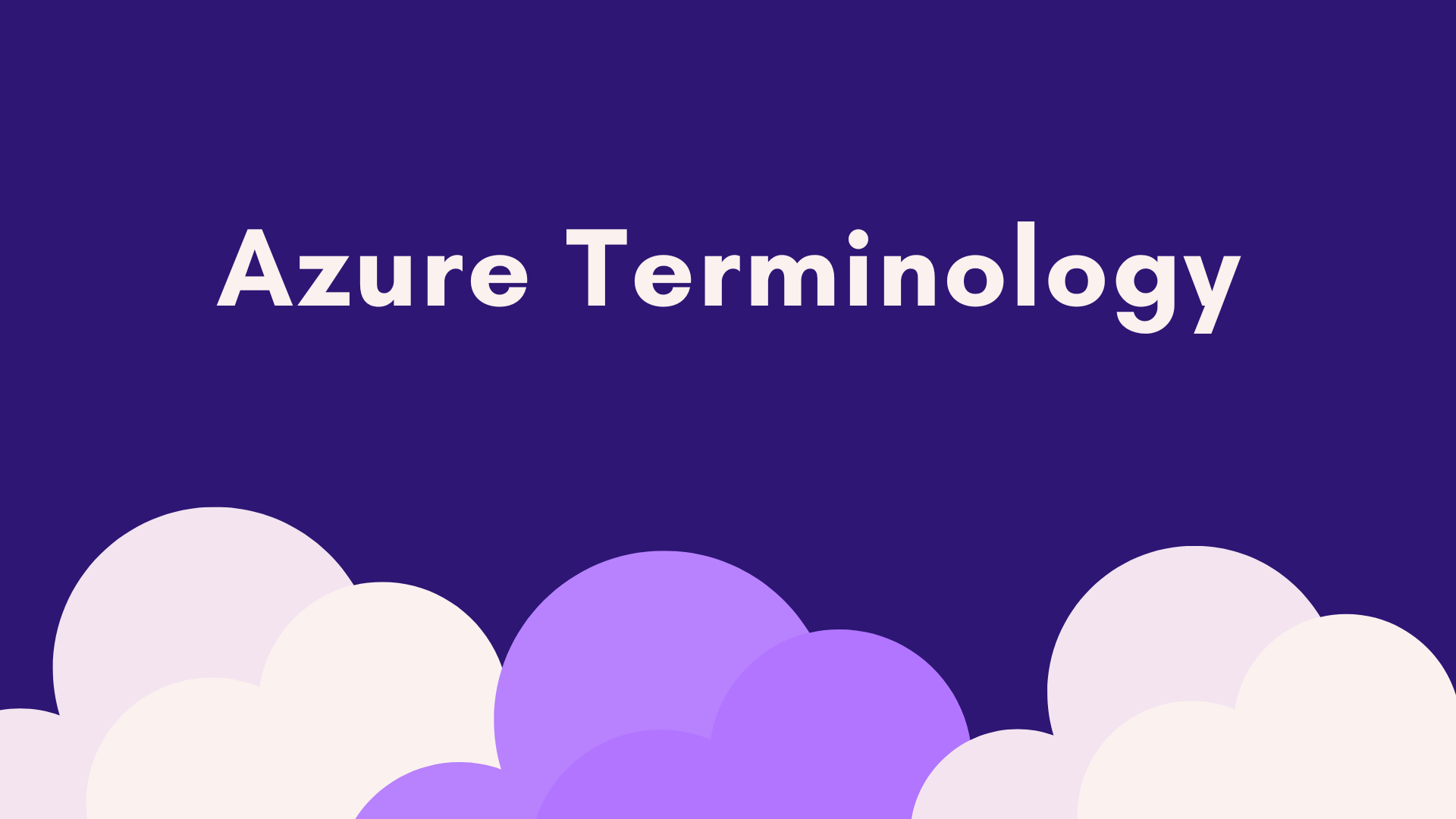Azure Terminology
In this blog post I explain some common Azure Terminology.

When I first started learning Azure there was a lot of terminology to learn and understand, new names for things, new technology, and lots of acronyms that went with those new things!
Understanding some of these new terms and how they all fit together took me some time to figure out. So let's walk through some of them, as they are vital to understand these terms and technology both for when you are designing architecture in Azure and also sitting some of the Azure certifications.
Azure Region
An Azure region is a set of datacentres within a defined perimeter. Now lots of people want to know what the perimeter is but Microsoft doesn't share that information externally and to be honest even as an employee, I don't have access to that information. There is generally speaking two regions close together as well, so think here in the UK we have the UK West Region and the UK South Region. The two regions are at least 300 miles apart when it is possible.
Within each region the products/services that are available can vary, some regions get new features sooner than others. We have a great tool which helps to show you which products are available by region.
Availability Set
As with any datacentre there are times when hardware fails unexpectedly, there is unplanned downtime or there is planned downtime, and your infrastructure needs to be able to handle that. Not all of your workloads will require to be highly available and resilient, but you should planned for any unexpected or expected events and ensure those workloads that require to be available all the time are available. Utilising Availability Sets can help with this.
Utilising availability sets within Azure is a way of ensuring that not all your virtual machine (VM) resources are hosted across multiple servers, racks, storage units and network switches, which will help to ensure that if something unexpected happens on a subset of your VMs are affected and your workload is still operational. Utilising availability sets provide you with a 99.95% SLA and help protect you against a hardware failure within datacentres.
You can find a tutorial on how to deploy your VMs using PowerShell here.
Availability Zone
Another option to help provide reliability and protect from failures within your VM workloads is something called availability zones. Your virtual machines within an availability zone are hosted within different physical locations within an Azure region. Helping to protect you against an entire data centre failure and utilising them provides you with a 99.99% SLA.
There are tutorials available to help utilise availability zones available here.
Proximity Placement Groups
We've all had an workload that needs has multiple components to it and they need to have the fastest connection between those parts or the whole thing just falls apart and is a miserable experience for the end users (and the IT department). If you have to implement that kind of workload within Azure you don't have a say as to where those workloads go in the datacentre, you don't get to pick the rack or shelf our workloads sit it and that can lead to issues. However, making use of proximity placement groups helps resolve that as it helps to keep Azure compute resources located physically together. If you want to look into implementing proximity placements groups check out our Azure CLI implementation guide.
Remember
Some of your workloads will need high availability, some will need a specific level of high availability while others will not need any high availability at all. Deploy the solutions as necessary. Make sure you understand the terminology, benefits and costs of each, it could save you late nights and mean the difference between a pass and fail in an exam.
